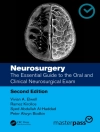There have been books over the years discussing the history of ophthalmology, but none that focus directly on just the most critical thinkers whose insights provided the foundation for the discipline. These men and women advanced knowledge about vision, diagnosis, disease mechanisms, and therapy through innovative thinking and perseverance against old ideas. Their stories are intriguing at a personal level and for showing the complexity of advancing medical science and, therefore, should be required reading for anyone practicing ophthalmology.
Foundations of Ophthalmology includes giants such as Young (the nature of color and light), Braille (a practical reading system for the blind), Helmholtz (development of the ophthalmoscope), von Graefe (defining glaucoma), Curie (discovery of radiation and the basis of radiation therapy), Gonin (demonstration how to cure retinal detachment), Ridley (serendipity that led to intraocular lenses), and Kelman (development of phacoemulsification that revolutionized cataract surgery).
Spis treści
Chapter 1. Johannes Kepler and René Descartes: A Retinal Image is Transmitted to the Brain.- Chapter 2. Jacques Daviel and the Invention of Modern Cataract Surgery.- Chapter 3. John Dalton: the Recognition of Color Deficiency.- Chapter 4. Thomas Young and the Foundations of Light, Color, and Optics.- Chapter 5. Valentin Haüy and Louis Braille: Enabling Education for the Blind.- Chapter 6. Jan Evangelista Purkinje: Visual Physiologist.- Chapter 7. Franciscus Donders and the Management of Anomalies of Refraction.- Chapter 8. Hermann von Helmholtz: The Power of Ophthalmoscopy.- Chapter 9. Dr. Graefe Will See You Now. The Beginnings of Scientific Ophthalmology and Education in the Middle of the Nineteenth Century.- Chapter 10. Karl Koller and the Introduction of Local Anesthesia.- Chapter 11. Foundations of Ophthalmology: Great Insights That Established the Discipline Allvar Gullstrand: Dioptrics of the Eye and the Slit Lamp.- Chapter 12. Marie Curie: Radiation as Medium That Can Cure.- Chapter 13. Jules Gonin: Proving the Cause and Cure of Retinal Detachment.- Chapter 14. Harold Ridley and the Development of a Plastic Implantable Lens.- Chapter 15. Oxygen and Retinopathy of Prematurity: The Insights of Arnall Patz and Norman Alston.- Chapter 16. Charles Kelman: Phacoemulsification and Small Incision Cataract Surgery.
O autorze
Michael F. Marmor, MD is a Professor of Ophthalmology at Stanford Medicine. His clinical focus is on medical retinal disease: in particular, retinal dystrophies, macular dystrophies, toxic retinopathy, disorders of retinal function such as night or color blindness, and unexplained visual loss. Dr. Marmor chaired the 'Great Insights and Great Thinkers in Ophthalmology’ session for the 6th year in a row in 2015.
Daniel M. Albert, MD is department chair and on the faculty of the University of Wisconsin Medical School where he is now chair emeritus of ophthalmology and visual sciences, the Frederick Allison Davis Chair; the Lorenz Zimmerman Professor; and founding director of the Mc Pherson Eye Research Institute. There, he continues to study tumor growth and inhibition, the subject of his interest throughout his career.
A prolific contributor to the medical literature, Dr. Albert has well beyond 800 publications to his credit, including peer-reviewed papers, editorials, textbooks and book chapters. A widely used general ophthalmology text, Principles and Practice of Ophthalmology, is now in its third edition, with Dr. Albert continuing as its senior editor. Notably, the book’s original edition received the Association of American Publishers Best Medical Book award in 1993.
Beyond his outsized record of laboratory and clinical publications, Dr. Albert is a renowned ophthalmic historian, having published widely in the field, including texts that encompass the breadth of ophthalmic history. Dr. Albert has served as an editorial board member of nine scientific journals, most notable of which was his recently completed 20-year stint as editor-in-chief of Archives of Ophthalmology — newly re-named JAMA Ophthalmology. Dr. Albert also served as director of the American Board of Ophthalmology from 1997-2005 and as president of the American Ophthalmological Society from 2005-2006.












